
NGS’ NG/LNG SNAPSHOT – June 2019, VOLUME I
National News Internatonal News
NATIONAL
|
City Gas Distribution & Auto LPG Natural Gas / Pipelines / Company News Policy Matters/Gas Pricing/Others
|
 Electric Mobility
Electric Mobility
Panasonic aims to garner ₹700-crore revenue by 2021 from EV charging infra || Electric Air Taxi prototype by German startup Lilium, range 300 Km || Kerala issued tender to lease 1,500 electric busesPanasonic aims to garner ₹700-crore revenue by 2021 from EV charging infra
Panasonic India is betting big on the Indian electric vehicle (EV) infrastructure market, with the aim of garnering revenue worth ₹700 crore by 2021 from the segment with its offering Nymbus. In the next 3 years,
read more
the addressable market for us (stationary storage such as batteries and mobility) will be about ₹5,000 crore. The charging service combines physical components such as charging stations, swap stations, on board charges, telematics systems and the virtual components like cloud service, analytics, intuitive dashboard, and artificial intelligence to deliver one-stop solution. In the last four-five years, the company has invested ₹50 crore towards development and testing of the EV charging infrastructure, Atul Arya, Panasonic’s Head of Energy Systems Division said. In the first phase, Panasonic has partnered with electric mobility service providers–SmartE and qQuick, wherein the consumer durables company will deploy EV charging service on 150 SmartE electric three-wheelers and on 25 qQuick two-wheelers in the Delhi and national capital region. “The solution is poised to help individual EV users, EV fleet owners, e-commerce & logistics companies to manage their fleet more efficiently and also the utility providers, vehicle, equipment and battery manufacturers to understand the user patterns and calibrate the products and services accordingly,” the company said in a statement. “We have currently deployed our solutions in Delhi NCR and aim to expand the offerings to Bangalore, Pune, Hyderabad, Chennai and Amaravati in the next three years and 25 more cities in the next five years targeting approximately 1 million vehicles,” Arya said.
Source: Mint
show less
Electric Air Taxi prototype by German startup Lilium, range 300 Km
Electric Air Taxi prototype by the German startup Lilium claims to offer 300 km of range. The Lilium start-up was co-founded in 2015 by Daniel Wiegand, Sebastian Born, Patrick nathen and Mathias Meiner.
read more
It has already attracted more than $100 million in funding and employs over 300 people, bringing together a wealth of experience and expertise from across the world. It has tested the prototype of its five-seater electric air taxi. The jet is powered by 36 electric engines which gives the range of 300KM with top speed of 300Km/hour. The company claims it consumes the same amount of energy similar to an electric car with a similar distance. This jet takes-off vertically and then transition into horizontal flight like any other flight and while landing it comes to vertical again. While traditional airplanes depend on the control surfaces such a tail and rudder, whereas the Lilium jet is without tail and rudder, this kind of design makes it safer and affordable. The feature of this airplane fixed-wing designmakes it more efficient . By 2025, the start-up wants to be fully operational in cities around the world.
Source: ElectricVehicles.in
show less
Kerala issued tender to lease 1,500 electric buses
The three different tenders cover three different zones such as Thiruvananthapuram, Kozhikode, and Ernakulam. The tender includes the battery-powered,12-meter non-AC buses on either the wet or dry lease.
read more
The bidder provides the buses along with a driver and KSRTC will keep its own conductor in a wet lease and in a dry lease KSRTC will deploy the driver and the conductor and the bidder will only provide the bus. KSRTC can choose any option or can also go with the combination of both. The electric busmust function 250 kilometers on a single charge and should not be more than 6 months old during the supply of it to KSRTC. The bus must give a mileage of about 1.5 Kwh/Km and delivery of buses must start within 45 days of contract start date. The guarantee for the buses is to be given by the bidders that it gives a range of 250 Km on a single charge at 80%.
If the given range is not maintained or it is less than 95% the bidder must look into the issue immediately and take corrective action. Recently Goa and Delhi also issued tenders for electric buses.
Source: electricVehicles.in
show less
SNAPSHOT: NATIONAL
 Natural Gas / Pipelines / Company News
Natural Gas / Pipelines / Company News
GAIL lines up 54,000cr network expansion || Centre stops issuing penalty notices to Reliance-BP || A helpline to avoid gas leaks, panic situations || Reliance Industries tables bid for oil block || High gas prices led ONGC to start integrated development of KG basin blocks at a cost of Rs 3,917 cr || 600km human chain against hydrocarbon project soonGAIL lines up 54,000cr network expansion
State-run gas utility GAIL will spend Rs 54,000 crore in the next 2-3 years for expanding availability of the cleanburning fuel to cities and industries across the country in a bid to reduce the economy’s carbon footprint. “
read more
The year (2018-19) saw highest-ever capex in a single year at Rs 8,344 crore and we are investing another Rs 54,000 crore over the next 2-3 years in laying (more) gas pipelines that will feed households and industries such as fertiliser plants,” company chairman B C Tripathi said on Monday. The expansion of GAIL’s pipeline network is pivotal for the government’s plan to raise the share of natural gas in the country’s energy basket to 15% by 2030 from 6% at present as part of its strategy to address climate change. The ambitious expansion plan comes in the backdrop of the company posting its highest-ever net profit at Rs 6,026 crore in the financial year ended March 31, marking an increase of 30% over the previous fiscal. Profit rose 10% in the fourth quarter to Rs 1,122 crore. The company board recommended a final dividend of Rs 1.77 per share to take the total dividend payout to over Rs 8 per share in 2018-19. Tripathi said the company has sold its entire 5.8 MMT of LNG from the US till 2020 and 80%-90% beyond that year. Given the inflexibility of US LNG contracts, this is a feat in an oversupplied market and speaks volumes about the company’s portfolio management. GAIL has a 14,000-km pipeline network and is laying another 6,000 km of pipelines at a cost of Rs 32,000 crore to supply gas to unconnected areas in the east and the south. It is investing another Rs 12,000 crore in setting up city gas distribution networks for supplying CNG (compressed natural gas) and PNG (piped natural gas) in towns such as Varanasi and Patna.
show less
Centre stops issuing penalty notices to Reliance-BP
 The government has stopped issuing penalties on Reliance Industries and its partner BP plc for natural gas production from eastern offshore KG-D6 fields not matching the targets after the matter went into arbitration, according to an RTI reply by the DGH and sources.
The government has stopped issuing penalties on Reliance Industries and its partner BP plc for natural gas production from eastern offshore KG-D6 fields not matching the targets after the matter went into arbitration, according to an RTI reply by the DGH and sources.
read more
While a challenge by Reliance-BP to the imposition of penalties in the form of disallowance of recovery of a part of the cost of incurred on the fields led to the government stopping issuing notices after 2016, a similar arbitration proceeding had not prevented it from selling shares, seizing dividends and confiscating tax refunds – totalling about $1 billion, to recover retrospective tax dues from Cairn Energy Plc of UK. The government had between 2012 and 2016 disallowed Reliance from recovering the cost of $3.02 billion for KG-D6 output lagging targets, but no notice was issued after that even though production has plummeted to a fraction of the projections. The Directorate General of Hydrocarbons (DGH) in reply to an RTI stated that in all, four notices were issued that disallowed recovery of a part of the cost incurred by Reliance-BP in producing gas from Dhirubhai-1 and 3 (D1&D3) fields; the last one being on June 3, 2016. DGH in the RTI reply declined to share copies of the notices on grounds that the information was “commercial confidence of the third party” and said details cannot be disclosed because “the subject information is sub-judice before Arbitral Tribunal/Court of Law.” While emails and text messages sent to Oil Secretary M M Kutty and DGH seeking comments remained unanswered despite reminders, sources said the notices were stopped as the issue was being heard by an international arbitration panel and it would have tantamounted to contempt of proceedings if the government were to go ahead and keep imposing penalties. Gas production from Dhirubhai-1 and 3 gas field in the KG-D6 block in the Bay of Bengal was supposed to be 80 million standard cubic meters per day but actual production was only 35.33 mmscmd in 2011-12, 20.88 mmscmd in 2012-13 and 9.77 mmscmd in 2013-14. The output has continued to drop in the subsequent years and is now below 4 mmscmd. Reliance-BP challenged the cost disallowance of the past years and have initiated international arbitration seeking dropping of the same on grounds that the PSC does not provide for any such punishment.
https://www.thehansindia.com/business/centre-stops-issuing-penalty-notices-to-reliance-bp-531526[Edited]
show less
A helpline to avoid gas leaks, panic situations
Gas Authority of India Limited (GAIL) has introduced a toll-free helpline in all police limits in Bengaluru following a series of incidents involving its pipeline.
read more
If there is any uncertainty regarding the pipeline, GAIL personnel can be contacted on the helpline. In the recent past, there have been some serious incidents where the pipeline was damaged during infrastructure development work. GAIL authorities arranged an awareness class involving different civic bodies, corporations and interest groups in the Bengaluru section of the 1,000-km-long Dabhol-Bengaluru pipeline built by GAIL to transport gas for the city residents. A spokesperson for GAIL said, “Most of the participants were people whose work may disrupt or cause harm to the pipelines we have already laid. Telecom companies and corporations like BMRCL do not seek the permission from GAIL to carry out extension work which can be damaging to the pipeline and is likely to cause a gas leak.” Several such incidents have been reported and to avoid them in the future, the GAIL authorities have come up with a solution. “Whenever any such digging up work is about to happen, GAIL officials will be present along with workers. And previous leak breaks are being monitored by sensors. The safety awareness workshop is to help people understand the dangers of a gas leak and give them confidence to tackle difficult situations and not panic,” the spokesperson added.
show less
Reliance Industries tables bid for oil block
 Reliance Industries along with BP have bid for exploration acreage for the first time in their eight-year partnership under the government’s open acreage licensing policy for oil and gas that has put 32 blocks up for auction.
Reliance Industries along with BP have bid for exploration acreage for the first time in their eight-year partnership under the government’s open acreage licensing policy for oil and gas that has put 32 blocks up for auction.
read more
Reliance-BP has made an offer for one block in the Krishna-Godavari basin. The block had been demarcated by BP earlier. Mining major Vedanta has put in bids for 30 of the 32 blocks, the highest by any explorers. ONGC has bid for 20 blocks. Reliance and BP had joined hands in February 2011, with BP picking up a 30 per cent stake in Reliance’s 21 oil and gas exploration blocks for $7.2 billion. Reliance’s existing Krishna-Godavari fields have seen output dwindling at a rapid date. The company stopped production of oil from the MA field last year after a decade of operation. Gas from the D1 & D3 fields have dwindled to below 5 MMSCMD from 61.4 MMSCMD in 2010. The partnership is now focussing on a cluster of satellite gas finds (the R-Series) in the region, which is expected to commence production within two years. Reliance and BP have plans to invest Rs 40,000 crore in the fields. Bidding for 14 blocks under Open Acreage Licensing Policy (OALP) round-II closed on Thursday. Bidding was also held for 18 oil and gas blocks and 5 coal-bed methane (CBM) blocks under OALP round III. Besides Reliance-BP, Vedanta and ONGC, Oil India Ltd has bid for 15 blocks. Indian Oil, GAIL and SunPetro have bid for two blocks each, officials said. In July 2017, India allowed companies to carve out blocks of their choice in order to explore about 2.8 million sq km of virgin territory. Under the so-called open acreage licensing policy, companies are allowed to put in expressions of interest (EOIs) to prospect for oil and gas in areas not covered by a production or exploration licence. The EoIs can be put in at any time of the year but they are accumulated twice annually. The new policy replaced the old system of the government carving out areas for bidding. It guarantees marketing and pricing freedoms and moves away from the production sharing model to a revenue-sharing one, where companies offering the maximum share of oil and gas to the government are awarded the block. The blocks or areas that receive EoIs at the end of a cycle are put up for auction with the the firm that originally selected the area getting a 5-mark advantage. The two window of accumulating EoIs end on May 15 and November 15 every year. EoIs accumulated till May 15 are supposed to be put on auction by June 30 and those in the second window by December 31. The Centre expects investments of more than Rs 1 lakh crore from the first two rounds of the oil exploration policy.
https://www.telegraphindia.com/business/reliance-industries-tables-bid-for-oil-block/cid/1690664
show less
High gas prices led ONGC to start integrated development of KG basin blocks at a cost of Rs 3,917 cr
The government had increased the prices of locally produced gas by 10 per cent to $3.69 MMBtu for the six-month period between April-September 2019. High natural gas prices prompted Oil and Natural Gas Corp (ONGC) to start integrated development of offshore
read more
New Exploration Licensing Policy (NELP) block KG-OSN2004/1 and adjacent Petroleum Mining Lease (PML) block GS-49 at a cost of Rs 3,917 crore. “The development of KG-OSN-2004/1 block along with GS-49 has a total production potential of 5.55 MMSCMD of gas with eleven producer wells to deliver a cumulative gas production of around 13.16 BCM over 12 years,” it added. The government had increased the ceiling price for gas to be produced from difficult fields by approximately 21.5% to $9.32 MMBTU for the six-month period ending September 2019. According to the application, ONGC expects its KG shallow water block to produce 4.55 MMSCMD of natural gas at its peak and expects GS-49 block to produce 1 MMSCMD of natural gas at its peak. Shallow water block KG-OSN2004/1 was initially awarded to a Joint Venture of ONGC and BG Exploration and Production India, with a participating interest of 55% and 45%, respectively, under NELP VI round. BG subsequently exited the block leaving ONGC with 100% participating interest from March 2013. Post the discovery of commercially viable resources, the company had submitted a Declaration of Commerciality (DoC) to the Directorate General of Hydrocarbons (DGH) in May 2016 for cluster development of the two blocks as the discoveries were non-economical on a standalone basis. However, field development was not commenced immediately due to low gas prices prevailing during that point of time. The company finally submitted a revised FDP in December 2018. ONGC last financial year applied to the environment ministry to drill 145 development wells across 30 mining leases in Cambay basin, 28 wells in Dayalpur and Kasomarigaon fields in Assam and 406 wells in Mehsana asset. The oil and gas producer was also recently awarded environmental clearance to drill 200 wells across various fields in Sivasagar district of Assam at a cost of Rs 6,000 crore. The company notified a total of 11 new oil and gas discoveries last fiscal.
show less
600km human chain against hydrocarbon project soon
The Movement against Destruction along with various farmers’ associations will organize a massive human chain on June 12 against all ongoing and proposed hydrocarbon projects claiming that these pose a threat to the people of the entire delta region.
read more
The 600-kilometre human chain will begin at Marakanam in Villupuram and end at Rameshwaram in Ramanathapuram travelling through various districts, founder and president of the movement K K R Lenin told reporters here on Thursday, May 30. “Lakhs of farmers, traders and the general public will form part of the human chain that will extend to about 600 kilometres via Puducherry, Cuddalore, Nagapattinam, Tiruvarur, Thanjavur and Pudukottai,” Lenin further said. This protest is also against Sagarmala project, the establishment of the petro-chemical zone, atomic power projects, neutrino, Salem-Chennai eight-way project as well as Gail pipeline projects in Tamil Nadu, he added. “Farmers, people residing along the stretch where the human chain is to be scheduled, students, youths, functionaries and members of Tamil outfits and the general public will participate in large numbers,” he said. Political leaders such as MDMK general secretary Vaiko and Viduthalai Chiruthaigal Katchi leader Thirumavalavan will participate in the human chain, he said.
show less
SNAPSHOT: NATIONAL
 Policy Matters/Gas Pricing/Others
Policy Matters/Gas Pricing/Others
Re-election of NDA will be credit neutral for oil and gas sector: ICRA || Gas-Based plants’ revival, EV Infra on priority list of Govt in second innings || Managing soaring energy demand|| In ASI plan to conserve Taj Mahal: Shoe covers, CNG in Agra || High level committee recommends strategy to reduce crude oil imports || High-level committee proposes higher gas price for existing/new discoveries
Re-election of NDA will be credit neutral for oil and gas sector: ICRA
 The re-election of National Democratic Alliance (NDA) will be credit neutral for the domestic oil and gas sector, research and retaings agency ICRA said today. It added that even though the government’s initiatives should help companies in the sector going forward, clarity on pricing freedom on sensitive products and adequate subsidy provision will be critical for the financial profile of the Public Sector Undertakings (PSUs).
The re-election of National Democratic Alliance (NDA) will be credit neutral for the domestic oil and gas sector, research and retaings agency ICRA said today. It added that even though the government’s initiatives should help companies in the sector going forward, clarity on pricing freedom on sensitive products and adequate subsidy provision will be critical for the financial profile of the Public Sector Undertakings (PSUs).
read more
Oil and Natural Gas Corporation (ONGC), India’s largest oil and gas producer, had last fiscal acquired Hindustan Petroleum (HPCL), the government-owned fuel retailer at a cost of Rs 36,915 crore. While, the acquisition helped the government meet its disinvestment target for the fiscal, it impacted the oil explorer’s working capital and cash reserves during the fiscal. Also, Oil Marketing Companies (OMCs) had to face the ire of the consumers when they had last year initiated a 19-day price freeze on petrol and diesel before the Karnataka elections. The government had during its previous tenure revamped oil and gas bidding framework and the oil and gas exploration policy. The new bidding frame-work allowed companies to carve out their own blocks and allowed all forms of hydrocarbon extraction under a single license. Also, the HELP frame-work replaced the then prevalent fiscal system of production sharing based on Investment Multiple and cost recovery or production linked payment with revenue sharing model. Petroleum and Natural Gas Regulatory Board (PNGRB) has awarded licenses for setting up city gas distribution networks in 136 geographical areas in the past year which is expected to expand the network of Compressed Natural Gas (CNG) stations in the country to 10,000 from the current 1,500 and piped natural gas (PNG) connections to household kitchens to five crore from around five lakh currently. PNGRB Chairman D K Sarraf had in March said around Rs 70,000 crore investment was committed in 86 GAs awarded in the 9th city gas bid round in August last year while additional Rs 50,000 crore was committed in the 50 GAs awarded in the 10th round this year. The government has also released 7.19 crore LPG connections under Pradhan Mantri Ujjwala Yojana (PMUY) so far. Commenting on the results of the just concluded general elections, Pramod Chaudhari, chairman at Praj Industries said. “I expect the new government to take up economic stimulus and growth as a priority agenda. As a result of the prevailing geopolitical situation, there is a sense of skepticism, especially owing to the rise in crude oil prices and flagging trade wars. New Government should de-bottleneck and accelerate the implementation of progressive Bio-fuels policy.” Pramod Chaudhari, chairman at Praj Industries said the government should oversee fulfilment of ethanol blending mandate of 10% and eco-system development to set up Compressed Bio Gas (CBG) plants. In a bid to reduce reliance on conventional fuels, increase farmers’ income and propel the use of bio-fuels in the country, the pil ministry had last year launched a new scheme and announced the new bio-fuel policy. The scheme aims at rolling out 5,000 Compressed Bio-Gas plants in a phased manner, with 250 plants by the year 2020, 1,000 plants by 2022 and 5,000 plants by 2025, at an investment of around Rs 1.7 lakh crore.
show less
Gas-Based plants’ revival, EV Infra on priority list of Govt in second innings
Revival of gas-based power plants and putting up electric vehicle infrastructure are expected to be on the priority list of the new NDA government. innings/articleshow/69509470.cms
read more
The power ministry is expected to approach the union cabinet to get approval in the next 100 days for a subsidy mechanism to revive gas-based power projects, a senior government official said. The country has nearly 25,000 megawatts of operational gasbased capacity, all of which is stressed because of the unavailability of fuel. In its first 100 days in office, the government will also target to set up public charging stations for electric vehicles in Delhi, Gurgaon, Bengaluru and Hyderabad. Battery swapping and charging stations for e-rickshaws are also planned to be set up in the National Capital Region. Cabinet approval is likely to be sought for a pilot project to make power plants more energy efficient by using advanced ultra-super critical technology. As per the plan to revive gas-based power plants, the ministry is considering a gas auction mechanism, by pooling domestically produced gas with LNG and subsidising the tariffs, an official said. The scheme is proposed to be run for two years starting this year. It will be similar to the one run between 2015-16 and 2016-17 with financial support from the Power System Development Fund. The government is also considering allowing gas-based power plants to sell electricity generated under the proposed subsidy scheme in the spot market. The power and oil ministries are readying a scheme to electronically auction imported and RNLG as per the recommendations of a committee headed by cabinet secretary PK Sinha. In its last cabinet meeting in March, the outgoing government had allowed power plants to sell in the short-term market electricity generated from coal supplied by state-run Coal India.In the previous rounds, the government had subsidised the tariffs at ₹5.50 per unit.
show less
Managing soaring energy demand
India has now become the fastest-growing energy market. The International Energy Agency says investments in the energy sector here went up by 12% in 2018, which is the highest rate globally.
read more
Yet, there’s crying need for sustained reforms in the energy economy, to shore up energy efficiency, revamp market design and modernise taxation across the board in oil, power et al. Per-capita energy consumption nationally is low, barely a third of the global average. We need a thriving market for power, so as to boost efficiency in generation and consumption, improve quality, and also bring about competitive prices. The power sector remains riddled with populism and political patronage of theft. Almost a third of the revenues in power distribution are routinely lost. The moribund finances of state power utilities stymie investment to raise efficiency in generation and supply. There are glaring rigidities in oil too. We remain much too dependent on tax revenues from oil products, both at the Centre and in the states, never mind a techno-economic paradigm shift in the offing, in favour of electric vehicles and public transport, away from oil-fuelled transport. Further, the continuing tax-on-tax regime for the main petroleum products disfavours improved logistics in a large country. Oil products and electricity must be brought into the goods and services tax regime, although the world over there are limited tax set-offs across the value chain for oil products. In tandem, transparency in state power utility finances brooks no delay. Town planning to minimise commutes, prioritising public transport and e-vehicles, developing clean coal technology and boosting coal supply, along with R&D in carbon capture these must figure in the next government’s roadmap for energy sector reforms.
https://economictimes.indiatimes.com/blogs/et-editorials/managing-soaring-energy-demand/
show less
In ASI plan to conserve Taj Mahal: Shoe covers, CNG in Agra
 The plan recommends a comprehensive switch to CNG fuel in Agra, strict enforcement of vehicle pollution norms and steps to prevent fine dust from the construction of the Metro, among other measures.
The plan recommends a comprehensive switch to CNG fuel in Agra, strict enforcement of vehicle pollution norms and steps to prevent fine dust from the construction of the Metro, among other measures.
read more
Those visiting the Taj Mahal may now compulsorily have to use “shoe covers” to enter the main mausoleum to keep dust away from the iconic seventh century monument, which is facing structural erosion due to pollution and alleged neglect. The Archaeological Survey of India (ASI) has submitted a host of such measures as part of a “Site Management Plan” to the Supreme Court, in pursuance of its order earlier this year, for conserving the Taj Mahal. The plan recommends a comprehensive switch to CNG fuel in Agra, strict enforcement of vehicle pollution norms and steps to prevent fine dust from the construction of the Metro, among other measures. It recommended “a complete ban on burning of bio mass/municipal waste. Battery and CNG operated vehicles should be encouraged. All public transport running in the city should be CNG-based or battery-operated”. The ASI also proposed measures to encourage plantation in the city’s open areas and strict implementation of the National Building Code for construction-related activities. It suggested scientific treatment and cleaning of the replica graves and surrounding walls inside the mausoleum. The survey also suggested that “all buildings and gardens within the complex need to be regularly maintained to ensure its good state of preservation”. It further said that alternate queuing systems and differential ticketing systems must be used and extra security personnel be deployed at various locations to cater to the high footfall. “An approximate additional deployment of 45-50 security personnel is required on site,” the plan said. It also recommended that “use of electric crematorium should be encouraged” and the diesel engines used in trains be phased out. To prevent dust from spreading, it recommended “mechanical and wet cleaning of roads” within 5-km radius of the monument.
show less
High level committee recommends strategy to reduce crude oil imports
The import dependency of crude oil and liquified natural gas during the year was 82.59% and 45.89%. In a report submitted to the oil ministry on Tuesday, a high level committee (HLC) of companies has recommended strategies to reduce import dependency.
read more
The committee was formed to discuss research-related synergies and tax issues for state-run oil companies. The committee also explored the possibility of forming a new entity for oil services and related manpower. “It also explored the need and possibility of formation of new entity dealing with oil services and supply of qualified manpower to oil and gas sector around the world,” the ministry said in its statement. The committee consisted of Anil Kakodkar (scientist) and Sidharth Pradhan, an expert on financial and tax issues. “They also looked into mergers, acquisitions and consolidation of oil and gas public sector undertakings (PSUs) and the joint ventures,” the ministry said in a press statement. The ministry, in its statement, further said that the committee has recommended short-term, medium-term and long-term strategies in the report to help reduce the import dependency of the nation. The ministry also added research and development (R&D) is going to play an important role in the process to reduce import dependency. Ministry of Petroleum & Natural Gas will consider the recommendations submitted by the Committee while formulating policies in the said matter,” the statement further added.
show less
High-level committee proposes higher gas price for existing/new discoveries
A high-level committee appointed by the Ministry of Petroleum and Natural Gas has recommended a higher natural gas price for producers from existing discoveries among measures to bring down India’s dependence on crude oil imports. “
read more
There are some gas fields where gas production can be started if a better price is offered to them. To boost domestic production of natural gas, the committee has recommended a more remunerative price for (both new and existing) marginal/deep sea gas discoveries,” Anil Kakodkar, an eminent scientist and one of the two members of the committee, told BusinessLine. The recommendation is significant as at present only new difficult discoveries have been allowed a higher price of natural gas by the Ministry. The committee recommendation covers those discoveries that have been awarded under the New Exploration Licence Policy (NELP) and pre-NELP regimes. “The committee has also recommended increasing the use of bio mass, essentially surplus agricultural residue, for harnessing bio fuels. We have also recommended seeking more means for developing bio crude, bio fuels and bio gas…The committee has made major recommendations to accelerate domestic research to commercialise indigenous resources to enhance hydrocarbon supply,” Kakodkar added. An official statement said the committee has clearly brought out the strategy to reduce the import dependency of the nation in the report and has recommended short-term, medium-term and long-term strategies. The Ministry of Petroleum and Natural Gas will consider the recommendations submitted by the committee while formulating policies to bring down imports, the statement added.
show less
SNAPSHOT: NATIONAL
 LNG Development and Shipping
LNG Development and Shipping
India's green vision to see full duty exemption on LNG || Pipeline delays to keep India’s Ennore LNG terminal underutilized until 2023 || H-Energy seeks 19 LNG cargoes for delivery from September 2019India’s green vision to see full duty exemption on LNG
 Petroleum Ministry officials said they are hopeful that this cut would be included in the Union Budget 2019-20 proposals to be presented in Parliament this July.
Petroleum Ministry officials said they are hopeful that this cut would be included in the Union Budget 2019-20 proposals to be presented in Parliament this July.
read more
The matter has already been discussed with the Finance Ministry. In a bid to promote a gas-based economy, the new Government may cut customs duty on liquefied natural gas (LNG) to zero per cent from 2.5%, to cut cost of power further and aid city gas distribution (CGD) projects besides boosting fertiliser production, according to official sources. LNG is a clean fuel and its imports currently attract 2.5% basic customs duty. In addition, a social welfare surcharge of 10% is levied that takes the effective customs duty on LNG to 2.75%. This adds up to the cost of imported gas as LNG requires additional cost for reconversion into gas and transportation. The Union Budget 2017-18 halved duty on LNG from 5 per cent. The industry and the Petroleum Ministry have been pitching for exempting LNG from import duty for some time now as there is a shortage in domestic production. The Centre has exempted domestic power generators using gas as fuel to import LNG without payment of any duty. It has, however, kept a vast section of user industries such as fertiliser, LPG, CNG, PNG and petrochemical out of this duty relief. This is likely to be corrected this year to provide a level playing field to all gas users in the country, said sources.
show less
Pipeline delays to keep India’s Ennore LNG terminal underutilized until 2023
The Ennore LNG terminal operated by state-owned Indian Oil Corp. will remain underutilized until 2023 because of delays in the construction of the gas distribution pipeline, company officials said Tuesday, May 21.
read more
The facility, which has a nameplate capacity of 5 million mt/year, is expected to import around 0.75 million mt in 2019, and 1.3-1.4 million mt/year by 2021. The $735 million LNG terminal, commissioned in February, is the first one to be built on India’s east coast, at Tamil Nadu’s Kamarajar port. IOC received a commissioning cargo from Swiss trader Gunvor in February after completion of works related to dredging and pipeline around the berth. A second cargo was delivered last week by the same trader, officials said. The entire pipeline network associated with the project is expected to be completed by March 2021, and will connect cities across the southern Indian states of Tamil Nadu, Karnataka, and Andhra Pradesh.
Source: SP Global/Indian Oil & Gas
show less
H-Energy seeks 19 LNG cargoes for delivery from September 2019
India’s H-Energy is seeking to buy 19 liquefied natural gas (LNG) cargoes for delivery from September, three industry sources said on Wednesday.
read more
It is looking for the cargoes to be delivered from September 2019 to December 2021, one of the sources said. Offers are due by next week, the sources added. In April, H-Energy sought 15 LNG cargoes for delivery during the fourth quarter of 2019 and throughout 2020, but it was not immediately clear if that tender had been awarded.
Source: Reuters/Indian Oil & Gas
show less
|
Natural Gas / Transnational Pipelines / Others LNG as a Marine Fuel / Shipping Technological Development for Cleaner and Greener Environment Hydrogen & Bio-Methane
|
SNAPSHOT: INTERNATIONAL
 Global LNG Development
Global LNG Development
Asia LNG spot price drops below $5/MMBtu as supply floods market || First Gen, Tokyo Gas kick off LNG terminal project || Argentina readies to join LNG exporters club with maiden cargo || Yamal LNG spot volumes on the rise, adding to oversupply || China LNG buyers seek to swap U.S. cargoes after fresh tariffs || Cooler Asia summer may add to LNG woes as world awash with gas || Trade war leaves LNG projects vulnerable || Malaysia's Petronas achieves first LNG production at floating facility || Open Season process for LNG terminal project in Wilhelmshaven begins || Saudi Arabia to buy U.S. LNG from Sempra Energy's Port Arthur project || EnergyAustralia agrees to buy gas from Port Kembla LNG facility in NSW<Asia LNG spot price drops below $5/MMBtu as supply floods market
The Asian spot price for liquefied natural gas (LNG) has dropped to below $5 per MMBtu this week as sellers flooded the market with spot cargoes, trade sources said. * The price is at its lowest level since the beginning of April.
read more
Oil majors Shell and BP each offered a July loading cargo at $4.60-$4.65/MMBtu on Wednesday in Platts market on close (MOC) window, at a price well below the $5.35/MMBtu levels seen last Friday, they added.
A large tender by Egypt to sell up to 13 cargoes, as well as several sell tenders by Indonesia’s Pertamina, Angola and Australia are also weighing on the market, sources said.
show less
First Gen, Tokyo Gas kick off LNG terminal project
 First Gen Corp. & Tokyo Gas Co. Ltd. have broken ground for their LNG (liquefied natural gas) terminal project here, meant to ensure continuous fuel supply for power plants that currently rely on Malampaya gas.
First Gen Corp. & Tokyo Gas Co. Ltd. have broken ground for their LNG (liquefied natural gas) terminal project here, meant to ensure continuous fuel supply for power plants that currently rely on Malampaya gas.
read more
There is no new discovery of gas fields in the Philippines yet, and Malampaya is expected to start producing less fuel by the mid-2020s.First Gen currently operates four gas-fed power plants with an aggregate capacity of about 2,000 megawatts, including the 1,000-MW Santa Rita, 500-MW San Lorenzo, 414-MW San Gabriel and 97-MW Avion — all of which sit adjacent to the LNG project site.The two-phase LNG project will have two storage tanks with capacities of 5 million tons yearly and 2 mtpa.This will be Tokyo Gas’ first such facility outside Japan.The company on Monday led a “kagami biraki” ceremony — a traditional Japanese rite performed when celebrating New Year as well as when embarking on new endeavors
https://business.inquirer.net/271462/first-gen-tokyo-gas-kick-off-lng-terminal-project
show less
Argentina readies to join LNG exporters club with maiden cargo
Argentina is about to export its first LNG cargo from a new floating facility, marking a milestone for its energy sector boosted by rising gas production from its large Vaca Muerta shale region.
read more
State energy firm YPF is believed to be offering a partial LNG cargo from FLNG Tango, the liquefaction vessel off Bahia Blanco, two LNG trading sources said on Monday. One source said the cargo was on a free-on-board (FOB) basis for prompt loading. FLNG Tango, owned by Belgian shipping company Exmar , arrived in Bahia Blanca in February.
Argentina will become the 21st country to export LNG. It has long bought LNG, alongside buying pipeline gas from neighbouring countries and producing its own, to boost supplies especially during winter. But rising output from Vaca Muerta, one of the world’s largest reserves of shale oil and gas, helped it reduce LNG imports by over 20% last year to 2.6 MMT, according to industry group GIIGNL. The new exports do not mean Argentina will cease importing LNG; energy firm Integracion Energetica Argentina (IEASA), formerly known as ENARSA, has issued buy tenders for LNG cargoes for delivery throughout May to September. The country needs billions of dollars in investment into the construction of pipelines, storage terminals and other energy infrastructure to fully benefit from its shale resources. In many countries with a fast-developing energy industry, bottlenecks and price moves can mean that some regions are left energy poor while others export. Major LNG exporter Australia, for example, is seeking to import LNG soon.
Source: LNG Global
show less
Yamal LNG spot volumes on the rise, adding to oversupply
Liquefied natural gas (LNG) available for spot purchase from Russia’s Yamal plant is climbing as companies with long-term contracts take their time to ramp up purchases, industry sources said, adding to oversupply in the global market.
read more
Long-term contracts with Total, Novatek, PetroChina, Gazprom and Naturgy were expected to absorb Yamal LNG volumes, but there is still part of the plant’s 16.5 MMTPA production available for spot trade. This year up to about 8.7 MMT of spot LNG out of the 16.5 MMTPA total is being traded from the project – spread between the project’s equity shareholders Novatek, PetroChina and Total – according to Reuters calculations. The high spot volumes from Yamal are adding to oversupply in the global LNG market, with high spot volumes from other projects around the world. Spot volumes sold by Novatek, which has a 60% share of volumes not locked in to long-term contracts from Yamal, are expected to rise above 5 MMTPA from less than 4 MMT last year, a source familiar with the matter said. PetroChina and Total, which each hold 20% stakes, both have about 1.74 MMT available to sell on the spot market. PetroChina was the last company to start its long-term contract, for 3 MMT of LNG for delivery to China. The first cargo is on its way and 11 more will be shipped to China as part of the contract this year. Gazprom, Novatek and Naturgy are expected to take their full contracted volumes from next year, market sources said. Competing for buyers amid growing supply from the United States, some Yamal sellers have already found takers for their spot volumes. Up to 85% of Novatek’s spot cargoes have already been sold this year. The majority are destined for Europe, with some heading for Asia and India. Novatek has also sold some cargoes for 2020 delivery. With tight price spreads between Europe and Asia, the majority of spot Yamal cargoes could continue to be delivered to Europe, as has been the case over the past six months. However, the Northern Sea Route, which allows quicker shipments of Yamal volumes directly to Asia, rather than via Europe, is expected to reopen in the last week of June, a source close to the matter said. This will allow some of the volumes to find a home in Asia. Novatek will ship its first cargo via the Northern Sea Route in August, another source said. Total could also send some of its cargoes east this summer, having sent cargoes to Europe so far this year, another source said.
https://www.hellenicshippingnews.com/yamal-lng-spot-volumes-on-the-rise-adding-to-oversupply/
show less
China LNG buyers seek to swap U.S. cargoes after fresh tariffs
Liquefied natural gas buyers in China are seeking to swap their U.S. shipments for cargoes from other nations after Beijing pledged to raise tariffs amid a deepening trade dispute, according to traders with knowledge of the situation.
read more
Some Chinese LNG buyers have approached suppliers about trading the U.S. cargoes, which they’ve already committed to buy, for shipments from non-tariff nations, said the people, who asked not to be identified as the information isn’t public. While China’s imports of American gas have dropped since it slapped a 10% duty on the fuel in September, pressure is mounting to completely avoid the cargoes after Beijing said it would boost the tariff to 25% starting June 1. The trade war has derailed what should be a natural partnership, as the U.S. vies to become the world’s top exporter of LNG and China is on track to become the largest buyer. While cheap shale gas had helped U.S. exporters undercut other sellers that are nearer to China, the bigger tariff makes American LNG uncompetitive and has discouraged long-term partnerships. China has imported four LNG cargoes from the U.S. so far this year, down about 80% from the same period last year, according to vessel tracking data. That compares with a 21% jump in total LNG imports during the first quarter.
Almost all of China’s imports of U.S. LNG are received at terminals owned and operated by state giants China National Petroleum Corp., China National Offshore Oil Corp. and Sinopec Group. The companies are China’s biggest LNG buyers, and their terminals are also accessible to smaller independent buyers, including ENN Group and Beijing Gas Group. CNPC, the parent company of PetroChina Co., is the only Chinese firm with a long-term off-take agreement from a U.S. project. CNOOC has a long-term contract with Total SA, which sources cargoes from the U.S. None of the companies replied to requests for comment.
Source: LNG Global
show less
Cooler Asia summer may add to LNG woes as world awash with gas
Don’t count on a summer heatwave to rescue Asia’s LNG prices. Weather forecasts signal lackluster demand in the largest importing region, raising prospects a global glut will deepen.
read more
Temperatures across North Asia this summer will be cooler than a year ago, according to seven meteorologists surveyed by Bloomberg. This suggests the record heat in Japan and South Korea, which triggered a buying frenzy and catapulted prices to the highest since 2014, is unlikely to be repeated. LNG prices in Asia have slumped about 40% so far this year as the three biggest consumers — Japan, China and South Korea — have slowed spot buying after a mild winter and amid brimming stockpiles. Meanwhile, new projects from Australia to the U.S. have left the market amply supplied. While forecasters were split on whether temperatures in North Asia would be above or below historical averages, the overall expectations are that they will be milder and less volatile than last summer, which saw a price spike in June. A cooler-than-normal summer could also push spot prices in Asia down to parity or even a discount to Europe, reversing their typical premium, according to Robert Sims, an analyst at Wood Mackenzie Ltd. “We expect the real recovery will need to wait until winter this year,” Sims said by email.
Japan and South Korea recorded their hottest days ever last year. Temperatures peaked at 41.1 degrees Celsius (106 Fahrenheit) in Kumagaya, a city north of Tokyo, and 40.7 degrees in the northeastern South Korea town of Hongcheon. Meanwhile, the escalating trade war between the U.S. and China could be a wildcard for prices in Asia. Beijing said Monday it will boost sanctions on American LNG imports to 25 percent from June 1, which could lead to Chinese players seeking to swap or sell cargoes. Forecasters were asked by Bloomberg News in an email survey how they expected the weather in North Asia to fare this summer against both last year and historical averages.
Source: LNG Global
show less
Trade war leaves LNG projects vulnerable
The escalation of the trade war between the US and China could jeopardize several LNG mega projects that are awaiting final approval, according to Rystad Energy.
read more
China announced on Monday, May 13, that it will raise the duty on imports of US LNG to 25% from the previous level of 10% in retaliation to the US increasing its tariffs on $200 billion worth of Chinese goods. Rystad Energy forecasts that Chinese LNG demand will reach 95 MMTPA in 2025, up from 53 MMTPA in 2018. This would make China the world’s largest LNG importer. The US, on the other hand, is the fastest growing LNG exporter thanks to strong Asian and Chinese demand. Rystad Energy expects that US export volumes will nearly quadruple over the coming years, reaching 84 MMTPA by 2025 based on currently sanctioned projects. However, the increased tariffs will create additional headwinds for US LNG projects that are currently awaiting final investment decisions (FIDs). Rystad Energy has noted previously that if LNG prices continue to linger around their current low level for an extended period of time, some of the more expensive LNG projects could struggle to offer competitive terms to buyers – and this could result in FID deferrals.“Most of these projects need to secure long-term contracts in order to get financing for their development. Rystad Energy expects China to be one of the biggest contributors in sponsoring new LNG projects over the coming years, and there will be a reluctance to signing new deals with US projects as long as this trade war persists,” said Sindre Knutsson, Senior Analyst at Rystad Energy’s Gas Markets team. “For example, Cheniere and Sinopec agreed late last year on a 20-year deal that would supply 2 MMTPA of LNG to China starting in 2023. This deal could have been signed once the trade tensions were resolved, but due to the heightened tensions this has not happened.” China’s decision to impose tariffs on US LNG will make LNG projects outside of the US more attractive. As illustrated in the figure below, so-called oil-indexed gas contracts are more common in countries such as Australia, Qatar, Mozambique and Papua New Guinea compared to the US, where indexing to the Henry Hub price is more prevalent.“This means that non-US projects are more competitive in terms of breakeven price (delivered), and that China therefore could have greater bargaining power when negotiating new contracts,” Knutsson remarked.Commenting on the short-term outlook for the global gas market, Per Magnus Nysveen, Rystad Energy Head of Analysis, said: “US LNG export to China is already seriously affected by the 10% tariffs in effect from last year, and we expect it continue to be so as long as the tariff is imposed.”
https://www.hellenicshippingnews.com/trade-war-leaves-lng-projects-vulnerable/
show less
Malaysia’s Petronas achieves first LNG production at floating facility
Malaysian state-owned oil firm Petronas said on Tuesday, May 21, it has achieved its first liquefied natural gas (LNG) production at its floating LNG facility off the eastern state of Sabah. Petronas, or Petroliam Nasional Bhd as it is formally known,
read more
said production was attained three days after the Petronas FLNG (PFLNG) Satu facility achieved first gas. Petronas had earlier said in March it relocated the PFLNG Satu to the Kebabangan cluster field in Sabah, some 90 km northwest of the state’s capital city of Kota Kinabalu. The facility was previously moored in the Kumang cluster field off the coast of Bintulu in neighboring Sarawak, where it began the world’s first LNG production from a floating platform in 2017. Petronas also said last month that it expects to have its second floating LNG facility in Malaysia ready by the first quarter of next year.
Source: LNG Global
show less
Open Season process for LNG terminal project in Wilhelmshaven begins
LNG Terminal Wilhelmshaven GmbH (LTW) is due to begin investigating market participants’ interest in its LNG terminal project in Wilhelmshaven in an Open Season process.
read more
LTW will continue the initiative started by Uniper, to realise the first LNG import terminal in Germany at the present location. In order to take part in this Open Season process, interested parties are being asked to hand in a written expression of interest signed by their management, demonstrating that the party is already active on the market for LNG or intends to do so in the future. After having concluded a non-disclosure agreement, LTW will grant access to further details of the project. Afterwards, the participants can conclude a still non-binding Heads of Agreement (HoA) with LTW until the 19 July 2019. The conclusion of binding contracts is currently planned for mid-October 2019. Within the next three years, LTW plans to construct an LNG terminal at Germany’s only deepwater port location and start operations. It is designed as a floating storage and regasification unit (FSRU), a technology which can be realised most economically and quickly. The nominal send-out capacity of LNG will be up to 10 billion m3 per year. The Wilhelmshaven location offers ideal conditions from both marine and logistics perspective. Connecting it to the natural gas transmission grid only requires a roughly 30 km pipeline to be built in mainly agricultural setting. LNG tankers will be able to access the facility independently of tides, in accordance with highest international security standards. Alongside regasification and injection into the transmission grid, the FSRU shall offer the possibility for loading LNG onto bunker barges or tank trucks for road transport. By doing so, the Wilhelmshaven terminal can indirectly contribute to emissions reduction in shipping and heavy-duty transport by making LNG locally available.
show less
Saudi Arabia to buy U.S. LNG from Sempra Energy’s Port Arthur project
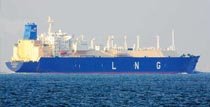 The terms of the deal could not be determined and it was not clear if Aramco would also take an equity stake in the project. Saudi Arabian Oil Co , known as Aramco, has agreed to buy U.S. liquefied natural gas (LNG) from San Diego-based Sempra Energy’s Port
The terms of the deal could not be determined and it was not clear if Aramco would also take an equity stake in the project. Saudi Arabian Oil Co , known as Aramco, has agreed to buy U.S. liquefied natural gas (LNG) from San Diego-based Sempra Energy’s Port
read more
Arthur project in Texas, the Wall Street Journal reported, citing people familiar with the matter. The terms of the deal could not be determined and it was not clear if Aramco would also take an equity stake in the project, WSJ said. It is unclear if the LNG will be used to power Saudi Arabia’s local economy, or sold to international buyers, according to the report. Aramco and Sempra did not immediately respond to Reuters’ requests for comment on the WSJ report. Aramco had been pushing its conventional and unconventional gas exploration and production programme to feed its fast growing industries, as the company planned to increase gas output and become an exporter. In the recent months, Aramco has been looking at gas assets in Russia, Australia and Africa.
show less
EnergyAustralia agrees to buy gas from Port Kembla LNG facility in NSW
Energy retailer EnergyAustralia has made an agreement with proposed Port Kembla LNG import facility operator Australian Industrial Energy (AIE) to buy 15 petajoules of gas a year over 5 years starting from January 2021.
read more
The gas price will be oil-linked. EnergyAustralia is the first customer to sign up for gas from the proposed facility which intends to moor a floating storage and regasification unit at Port Kembla, located about 100 km south of Sydney in New South Wales. Several similar deals are needed for the project to reach fruition. AIE is a joint venture comprising JERA and Marubeni Corp. of Japan and Australian mining entrepreneur Andrew Forrest’s Squadron Energy. AIE is endeavoring to secure base customers before making a final investment decision for the project. The Port Kembla terminal, estimated to cost A$250 million to establish, plans to import about 2 MMT of LNG per year for regasification and onward supply into the New South Wales domestic pipeline grid. The Port Kembla terminal is one of five proposed LNG import terminals around southeast Australia planned to help meet a perceived looming gas shortage in the region.
show less
SNAPSHOT: INTERNATIONAL
 Natural Gas / LNG Utilization
Natural Gas / LNG Utilization
Italy: natural gas is essential for the energy transition | New Swedish CNG buses will hit Qatari streets before 2022 FIFA Cup | Canada: New CNG fuelling station in Ontario underway || Myanmar: Over 23 million cubic feet of gas distributed daily for CNG buses || New natural gas school bus with ultra-low NOx is available in the U.S. || Natural gas stations for heavy-duty trucks rapidly increasing in SwedenItaly: natural gas is essential for the energy transition
 “Natural gas will play an increasingly central and strategic role in the energy transition in Italy and Europe, both in supporting the growth of other renewable energy sources, and as a source of renewable energy itself, alongside biomethane and hydrogen,” said Snam Chairman, Luca Dal Fabbro, while speaking at the Global Sustainability Forum in Rome,
“Natural gas will play an increasingly central and strategic role in the energy transition in Italy and Europe, both in supporting the growth of other renewable energy sources, and as a source of renewable energy itself, alongside biomethane and hydrogen,” said Snam Chairman, Luca Dal Fabbro, while speaking at the Global Sustainability Forum in Rome,
read more
organized by Luiss Business School. He explained: “Natural gas offers an immediate solution to reduce emissions from electricity generation and transport. According to a recent study conducted by the Gas For Climate consortium, a potential 270 BCM of biomethane and hydrogen could be produced by 2050, which could generate 217 billion euros in savings compared to an alternative decarbonisation scenario that does not take gas into account.” “Italy and Europe are well-positioned to use biomethane and hydrogen to transform climate risks into opportunities,” added Dal Fabbro. “Italy’s biomethane industry is one the most important in the world, and we have recently introduced a mix of hydrogen and natural gas into the national transport network, the first of its kind in Europe. Snam is focused on leveraging innovative technology to become a global leader in these areas.” Strengthened by integrated and cutting-edge technology, Italy is the premier market in Europe in terms of automotive methane consumption, with approximately 1.1 BCM consumed, 1 million vehicles currently in circulation and more than 1,300 distributors. There is even further potential in road transport, shipping and in the agricultural sector itself, including agricultural machinery, for which it is important to identify support tools and strategies.
show less
New Swedish CNG buses will hit Qatari streets before 2022 FIFA Cup
A large fleet of world-class CNG luxury buses manufactured by Swedish firm Scania is expected to hit Qatari roads much ahead of the start of the 2022 FIFA World Cup, according to Ambassador of Sweden to Qatar, Ewa Polano.
read more
Qatar announced last year its plans to replace the existing public transport diesel buses as part of its efforts to reduce carbon emissions and preparations for the mega event in line with the long-term vision. “We hope to supply the fleet of buses that Qatar is looking forward to acquire. We have very good buses manufactured by Scania and Volvo. The Scania buses are known for their luxury and high quality. These state-of-the-art environment friendly buses are expected to arrive in Qatar by early 2021 latest,” said Polano. “We are trying to present what Qatar needs at the moment that is Scania gas-powered buses. We also are very much involved in Qatar’s transformation with regard to economic diversification. So we are trying to boost the economic cooperation between different entities, and we are very happy to see the growing cooperation between Arab Agencies Company (ARACO) with Volvo, Scania and others,” she added. Polano also commented: “There is an express need from the highest level in Qatar, including the Minister of State for Energy Affairs H E Al Kaabi, who is so conscious about the environment and sustainability. Since Qatar has huge reserves of natural gas, therefore, it’s logical to have all the buses run on natural gas. We have the best technology in our buses and now we are developing for gas.” On developing needful infrastructure in Qatar such as CNG refueling stations, Walid Dowidar, General Manager at ARACO, said that there are many partners involved in this project that are working in close cooperation with Qatari authorities and stakeholders, and ARACO is one of them.
show less
Myanmar: Over 23 million cubic feet of gas distributed daily for CNG buses
The onshore oil fields distribute over 23 million cubic feet of gas daily for use in CNG passenger buses, said Tin Maung Oo, permanent secretary of the Ministry of Electricity and Energy.
read more
The information was disclosed during a press conference on the clarification of the ministry’s activities in the third year of the government’s term held in Nay Pyi Taw on May 9. He said 28,299 motor vehicles across Myanmar had been converted into CNG ones. The ministry sells gas around the clock by opening 46 CNG stations—41 in Yangon Region, two in Mandalay Region, two in Yaynangyaung Township and one in Chauk Township. Now, new Kwang Shin-brand machinery from Korea has been installed at the CNG station in Paleik town of Mandalay Region. Within the third year of the government’s term, Myanma Oil and Gas Enterprise produced 3.32 million barrels crude oil and over 623,000 million cubic feet of natural gas from 86 onshore and offshore oil and gas fields, according to the Ministry of Electricity and Energy. During the same period, 40 new onshore fields were dug—23 by Myanma Oil and Gas Enterprise and 17 by companies—producing 2.31 million barrels of crude oil and 19,019 million cubic feet of gas. Moreover, international companies dug 46 new offshore fields producing 1.2 million barrels of condensate and 604,818 million cubic feet of gas.
https://elevenmyanmar.com/news/over-23-million-cubic-feet-of-gas-distributed-daily-for-cng-buses
show less
Canada: New CNG fuelling station in Ontario underway
The CNG cardlock station will include four fast-fill lanes for heavy-duty vehicles and 2 dedicated lanes for fuelling large capacity trailers. Envoy Energy Fuels and Truk-King have started the construction of a public compressed natural gas (CNG) station in Fort Erie, Ontario.
read more
The CNG cardlock station will include four fast-fill lanes for heavy-duty vehicles and 2 dedicated lanes for filling large capacity tube trailers for Envoy Energy’s mobile CNG refuelling operations. The station, located along Ontario’s QEW highway and just minutes from the U.S.-Canada Peace Bridge border, has the capacity to fuel Class-8 trucks in approximately 5 minutes and over 200 trucks each day. The opening of the station is planned for April 2019. Truk-King was the first third-party carrier fleet in Ontario to adopt CNG when they switched one third of their fleet to CNG in early 2018 and plans to have its entire fleet of Class-8 trucks running on natural gas by the end of 2019.The station will provide Truk-King access to a reliable source of CNG fuel while removing emissions control issues with diesel engines and reducing their fuel costs and overall carbon footprint. When completed, the CNG fuelling station will be strategically located for heavy duty trucks along major shipping corridors while providing easy-access and fast-fill capabilities for use by third-party fleets. The collaborative team members for this station includes ComTech Energy, Enbridge Gas Inc. and Natural Resources Canada.
https://www.petrolplaza.com/news/21929
show less
New natural gas school bus with ultra-low NOx is available in the U.S.
The bus, manufactured by Blue Bird, will feature an engine developed by ROUSH CleanTech that is 90% cleaner than the Environmental Protection Agency’s (EPA) most stringent heavy-duty engine standard of 0.2 grams per brake horsepower-hour (g/bhp-hr).
read more
It is also the first high-volume production CNG Type-C school bus engine certified to California Air Resources Board’s (CARB) optional low nitrogen oxide (NOx) emissions standard of 0.02 g/bhp-hr. “Our customers want bus innovations that are environmentally friendly and allow them to access emissions-based grant funding, and the Blue Bird Vision CNG bus delivers,” said Phil Horlock, president and CEO of Blue Bird Corporation. “This is a huge step for Blue Bird and the school bus industry as we continue to be the first to bring the newest and cleanest engine technology into our lineup of buses.” ROUSH CleanTech developed the technology using Ford’s 6.8L V10 engine. “After concentrating on reaching CARB’s optional low-NOx standards for our LPG engine, we bring our Roush engineering success to the CNG engines by reaching the same ultra-low emissions levels,” said Ryan Zic, vice president of school bus sales at ROUSH CleanTech. This certification will help school districts obtain funding that supports NOx-reducing projects, such as the Volkswagen Environmental Mitigation Trust. More than 150 school districts operate about 5,500 CNG buses in the United States. The new 0.02 ultra-low NOx option is now available to order for Blue Bird Vision CNG school buses.
show less
Natural gas stations for heavy-duty trucks rapidly increasing in Sweden
Gasum has opened its first filling station with LNG and biogas in Sweden and the number of natural gas stations is expected to greatly increase in this country in the coming year.
read more
This opening is Gasum’s next step towards the 50 stations it has planned in the Nordic countries. The new network is a necessity in the transition to cleaner fuels for heavy-duty vehicles. The company has four filling stations for heavy-duty vehicles in Finland already. “The climate issue is best solved together. It is good that other fuel companies join forces in order to switch from diesel to LNG for heavy-duty vehicles. Simultaneously, the climate issue is stretching across borders, Gasum is therefore now building a network of stations that will cover all the Nordic countries,” said Mikael Antonsson, Director Traffic Sweden, Gasum. The filling station with LNG and biogas that was opened in Västerås is the first of its kind in Västmanland County, Sweden. The station has been identified as an environmentally sustainable investments and therefore been partially financed through the government’s Klimatklivet (climate investment program). “The investment in a station here in Västerås will contribute to an increased energy supply and thereby benefit the local economy. At the same time, it contributes to sustainable transportations in the county,” said Minoo Akhtarzand, County Governor of Västmanland. Gasum is one of the biggest producers of biogas in the Nordic countries and already owns a biogas production facility in Västerås together with local farmers. “Now when the station is opened in Västerås, we can help the local haulage companies improve their competitiveness through lowering their fuel costs while reducing their emissions of carbon dioxide, nitrogen oxide and small particles,” added Antonsson.
show less
SNAPSHOT: INTERNATIONAL
 LNG as a Marine Fuel / Shipping
LNG as a Marine Fuel / Shipping
Shipping Rates: Rising off bottom, still far from recovery || Study concludes IMO 2020 promotes U.S. energy security, trade, and the environment | China’s first fleet of LNG-fueled PSVs will feature Wärtsilä DF engines || World’s largest aluminum ship will run on LNG in Argentina/UruguayShipping Rates: Rising off bottom, still far from recovery
 Spot rates for liquefied natural gas (LNG) carriers hit an all-time high of around $200,000 per day in November 2018. That kind of cash flow, if sustained, quickly pays back your purchase price on a ship – but alas, it usually doesn’t last, and
Spot rates for liquefied natural gas (LNG) carriers hit an all-time high of around $200,000 per day in November 2018. That kind of cash flow, if sustained, quickly pays back your purchase price on a ship – but alas, it usually doesn’t last, and
read more
it didn’t. Rates summarily collapsed back to around the break-even level of $40,000 per day in February-April 2019. Rates are now back in the mid- to upper-$50,000 range per day, up around 40 percent over the past three weeks off a low base. A number of large-scale LNG export projects are about to come online, so the upward trend should continue. Project debuts bolster spot rates in two ways. First, by bringing more volume to the water. Second, by reducing the number of ships available for spot employment. Often, LNG export projects start-ups are delayed. If ships ordered to service those projects via long-term time charters are delivered by the shipyards before project construction is finished, the ships temporarily move into the spot market, weighing down rates. When the ships begin their normal long-term service, spot rate pressure subsides. LNG spot rates are still relatively low, more ‘not bad’ than good. It’s too early to say whether they can attain last year’s peak, and there’s still a fair amount of skepticism about 2019 – and even more concerns about the years ahead as more newbuilding vessels enter the market.
https://www.hellenicshippingnews.com/shipping-rates-rising-off-bottom-still-far-from-recovery/
show less
Study concludes IMO 2020 promotes U.S. energy security, trade, and the environment
Yesterday Energy and Environmental Research Associates released a white paper co-authored by Drs. James J. Corbett and Edward W. Carr of the University of Delaware on the economic effects of the International Maritime Organization’s (IMO) 2020 standards to cap sulfur emissions from shipping fuels. According to the paper, IMO 2020 “is good policy for the United States, for energy security, the economy, and the environment.”
read more
“The global shift to cleaner fuels serves U.S. interests, both economic and environmental,” the paper notes. “Advance regulatory notice, planning and investment, and technology and operational adjustment will help achieve IMO 2020 goals with minimal and temporary economic impact.” IMO 2020 will reduce the maximum sulfur content in marine fuels from 3.5% to 0.5%. With the United States already producing and using fuel that is five times more stringent, IMO 2020 will bring the rest of the world more in line with American standards. To achieve compliance, shippers can either install emissions-control devices known as “scrubbers” or exchange their high-sulfur fuel for a low-sulfur alternative such as liquefied natural gas or light, sweet crude—both of which are widely produced in the United States. “U.S. industry is prepared to provide advanced fuels and technologies to achieve IMO 2020 standards, at a competitive advantage,” the paper states. “The U.S. refining industry invested more than $100 billion over the past decade to meet growing demand for middle distillates used by freight transportation and to provide cleaner fuels, including ultra-low sulfur diesel and IMO 2020 compliant marine fuels.” The IMO’s Marine Environment Protection Committee 74th annual meeting is currently taking place in London. Thus far during the meeting, IMO officials, echoing earlier comments from the U.S. Coast Guard, have stated that IMO 2020 standards will be enforced as planned. The Coalition for American Energy Security launched earlier this year to educate policymakers on the benefits IMO 2020 offers to American energy security and competitiveness. Members of the coalition include, among others, the American Fuel & Petrochemical Manufacturers, the World Shipping Council, the United Steel Workers, the American Petroleum Institute, the Center for Liquefied Natural Gas, the Domestic Energy Producers Alliance, the Independent Petroleum Association of America, American Exploration and Production Council, and several state oil and gas associations.
show less
China’s first fleet of LNG-fueled PSVs will feature Wärtsilä DF engines
Wärtsilä has won the contract to supply 40 generating sets for 12 new LNG-powered platform supply vessels (PSV), the first such vessels to be built for a Chinese owner. The multiple benefits of the Wärtsilä 20DF dual-fuel engines were cited as the reason for the contract award over strong competitive bids.
read more
The ships are being built for China Oilfield Services Co Ltd (COSL) at the Wuchang Shipbuilding Heavy Industry yard and the Liaonan Shipyard in China.
Among the value-adding advantages cited in choosing the Wärtsilä 20DF engine were its high fuel efficiency, low operating costs and good environmental performance, as well as its low-load operating ability and proven reliability and durability. The order with Wärtsilä was signed in March 2019 and the 40 engines are scheduled to be delivered to the shipyards at the end of 2019. “Efficiency and environmental sustainability are key pillars of Wärtsilä’s approach to creating customer value. The choice of the Wärtsilä 20DF dual-fuelled engine for this major project reflects these values, and we are proud to maintain our leading position in this market by being selected for China’s first LNG fueled PSVs,” said Henrik Wilhelms, Segment Sales Director, Wärtsilä Marine. “More and more ships are being built for use with LNG fuel, and we see these 12 ships as part of a trend that will continue to grow. This is why we chose Wärtsilä, a company with experience and know-how in LNG fuel solutions,” commented Liu Hui, Manager of COSL Shipping’s Shipbuilding Project Management Team.
show less
World’s largest aluminum ship will run on LNG in Argentina/Uruguay
Australian shipbuilder Incat Tasmania Pty Ltd has secured a contract to build the world’s largest aluminum ferry. The 130-meter long, 32-meter wide ship was ordered by long standing customer,
read more
Buquebus, and will operate between Argentina and Uruguay. It will be the ninth vessel for Incat’s valued South American customer.The new Buquebus ship, Incat hull 096, is predicted to have a maximum speed of over 40 knots. It will be powered by four dual fuel engines that will burn environmentally friendly LNG while in service in the Río de la Plata.Work is underway on design and engineering, the physical construction will commence as soon as the detail design drawings are completed and approved by the customer. At a probable 13,000 gross registered tons, the LNG-powered vessel will carry 2,100 passengers and 220 cars.Incat shipyard currently has confirmed orders covering the next four years with high expectations of other large vessel orders. The workforce now totaling over 600 will be expanded to facilitate the construction of the new vessels in Incat’s order book.In 2014, Buquebus put into operation its first LNG-powered ferry, Francisco, also built by the Australian shipyard.
show less
SNAPSHOT: INTERNATIONAL
 Technological Development for Cleaner and Greener Environment Hydrogen & Bio-Methane
Technological Development for Cleaner and Greener Environment Hydrogen & Bio-Methane
World’s largest fleet of hydrogen fuel cell trains ordered in Germany || ANG Technology to collect boil-off gas on LNG ships || Flagships: EU funds construction of two hydrogen-powered vessels || President of Iceland opens the first multi-energy station in the country || Largest renewable hydrogen-driven mobility project launched in France
World’s largest fleet of hydrogen fuel cell trains ordered in Germany
 RMV’s subsidiary fahma issued a tender for 27 fuel cell trains throughout Europe. Now the winner has been determined: Alstom will deliver the vehicles of type Coradia iLint by the timetable change in 2022.
RMV’s subsidiary fahma issued a tender for 27 fuel cell trains throughout Europe. Now the winner has been determined: Alstom will deliver the vehicles of type Coradia iLint by the timetable change in 2022.
read more
In addition to the trains, the order also includes the supply of hydrogen, maintenance and the provision of reserve capacities for the next 25 years. Alstom offers the supply of hydrogen in cooperation with Infraserv GmbH & Co. Höchst KG, with the filling station being located on the premises of the Höchst industrial park. Enak Ferlemann, Parliamentary State Secretary of the German Ministry of Transport and Infrastructure, said: “The federal government supports this investment in climate-friendly mobility by assuming 40% of the additional vehicle costs incurred in comparison to diesel vehicles, as well as by providing proportional support for the hydrogen filling station. The project can serve as a model for the German transport ministry. We hope that many other projects in Germany will follow this example.”The world’s first two hydrogen trains have already been in regular passenger service in the Elbe-Weser network in Lower Saxony since September 2018. The Local Transport Authority of Lower Saxony (Landesnahverkehrsgesellschaft Niedersachsen, LNVG) will operate 14 Coradia iLint trains on that line from 2021. RMV is therefore the second operator to embrace environmentally-friendly hydrogen technology without exhaust gases, using the vehicles provided by fahma.
show less
ANG Technology to collect boil-off gas on LNG ships
Cenergy Solutions Canada, a global energy storage company, has signed a collaboration agreement with one of the largest Liquefied Natural Gas (LNG) shipbuilders in the world to store boil-off gas without compressing it in high pressure CNG tanks or refrigerating the gas to be restored as LNG.
read more
The captured gas is then able to be used to fuel the ship’s engines, with both dedicated and dual-fuel LNG as applications. Cenergy says its ANG storage tanks are a safe and economical way of storing the boil-off gas to be used on the ballast voyage. LNG ships can produce up to 250 tons of methane while in port or while the engines are idling during a voyage. Boil-off gas is the result of LNG becoming vapor as it increases in temperature while in transit. To keep from flaring the boil-off gas ships need to compress it to high pressures, liquify it or now store it in low pressure ANG tanks. Cenergy’s patented ANG systems now make the storage of boil-off universal for many applications including LNG ships, locomotives and trucks. Cenergy Solutions, CEO, Gary Fanger says: “This collaborative agreement with a major shipbuilder will help to give other LNG shipbuilders the confidence to utilize low pressure ANG systems to store boil-off gas on their ships. This boil-off gas storage solution can be used in many different LNG applications that are using more expensive and complicated ways of dealing with boil-off gas. Cenergy Solutions is working hard to utilize their patented ANG storage technology to change the way natural and biogas is stored, transported and used around the world.” Distributors and strategic partners are now being considered worldwide. Cenergy Solutions systems to store, transport and utilize natural and biogas at low pressures with ANG tanks are available internationally.
https://www.ngvglobal.com/blog/ang-technology-to-collect-boil-off-gas-on-lng-ships-0524
show less
Flagships: EU funds construction of two hydrogen-powered vessels
The European innovation project FLAGSHIPS has been awarded 5 million euros from the European Union to build and deploy two commercially operated zero-emission hydrogen fuel cell vessels, one in Lyon,
read more
France, and one in Stavanger, Norway. In Lyon, a hydrogen push-boat operated by Compagnie Fluvial de Transport (CFT) will serve as a utility vessel on one of its most demanding rivers, the Rhône. In Stavanger, hydrogen is intended to power a passenger and car ferry operated by Norled as part of the local public transport network. “FLAGSHIPS is a key project to demonstrate the superior features of hydrogen fuel cells in the maritime sector: lower CO2 and pollutant emissions and reduced noise amongst the most critical. The project will cooperate with relevant organization such as CESNI, IMO and certification bodies to speed up the introduction of hydrogen for the maritime sector both for inland and coastal operations and for freight and passenger transportation”, says Bart Biebuyck, Executive Director of the FCH2 JU. Green and sustainable shipping is a prerequisite for reaching national and international emission reduction targets. With increasing pressure for shipping to reduce harmful emissions, fuel cells and hydrogen are key technologies in providing a sustainable transportation option for the international shipping industry.
show less
President of Iceland opens the first multi-energy station in the country
The first multi-energy station in Iceland opened on May 15 in Reykjavík. The facility, built in the framework of the Hydrogen Mobility Europe (H2ME) project, is the third hydrogen station in the country, and the first combined station where biomethane, fast charging and hydrogen are all available under the same canopy.
read more
The President of Iceland Guðni Th Jóhannesson inaugurated the station, together with the Chairman of city of Reykjavík‘s Council of Environment and Health, Líf Magneudóttir, the FCH JU Executive Director, Bart Biebuyck and the General Manager of Icelandic New Energy, Jón Björn Skúlason. The EU Ambassador to Iceland, Michael Mann, attended the event as well, which marked an important milestone in Iceland’s energy history. The exemplary use of renewable sources in its electricity infrastructure puts Iceland in the perfect position to develop a sustainable transport system based on green hydrogen. The FCH JU supports Iceland to become a model in H2 transport in Europe, with 3 hydrogen refilling stations and 17 cars already deployed (or soon to be deployed) through the H2ME project. Following the opening a workshop took place celebrating the anniversary of the Icelandic New Energy Company, a company that promotes the use of hydrogen fuel in Iceland since 1999.
show less
Largest renewable hydrogen-driven mobility project launched in France
At the Electric Vehicles Symposium 32 (EVS32), the Auvergne-Rhône-Alpes regional council, Michelin and ENGIE groups, the Banque des Territoires and the Crédit Agricole formalized their commitment to Hympulsion,
read more
the project company tasked with deploying the largest renewable hydrogen-powered mobility project in France: Zero Emission Valley. Auvergne-Rhône-Alpes and the Banque des Territoires have acquired a 49% stake in Hympulsion as part of a unique public-partnership, while the Michelin Group, ENGIE and the Crédit Agricole together own a 51% stake in it. Hympulsion is now operational and will help speed up deployment of Zero Emission Valley – France’s first renewable hydrogen-driven mobility project for professional captive fleets (1,000 vehicles and 20 stations). Co-financed by European funds, this project provides vehicles and renewable hydrogen at an overall cost that is on a par with diesel. The first stone of the Chambéry station will be laid in June with general opening is scheduled in the final quarter of 2019. A temporary station will be opened in Clermont-Ferrand at the end of August 2019. Then, future stations will be opened across ten areas, including Lyon, Grenoble and Saint-Etienne. Meanwhile, subsidies will be awarded both by Auvergne-Rhône-Alpes and the European Union to cover the purchase of the one thousand vehicles. Hympulsion has already been awarded at the Assises Européennes de l’Energie (European energy conference) and its finance application is being managed by the ADEME (France’s energy management agency) within the framework of the “H2 mobility – hydrogen mobility ecosystems” call for tenders.
show less


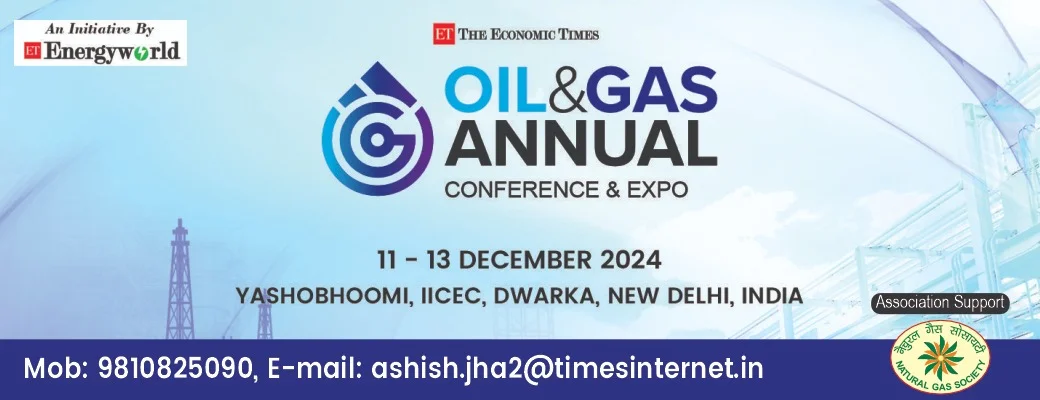



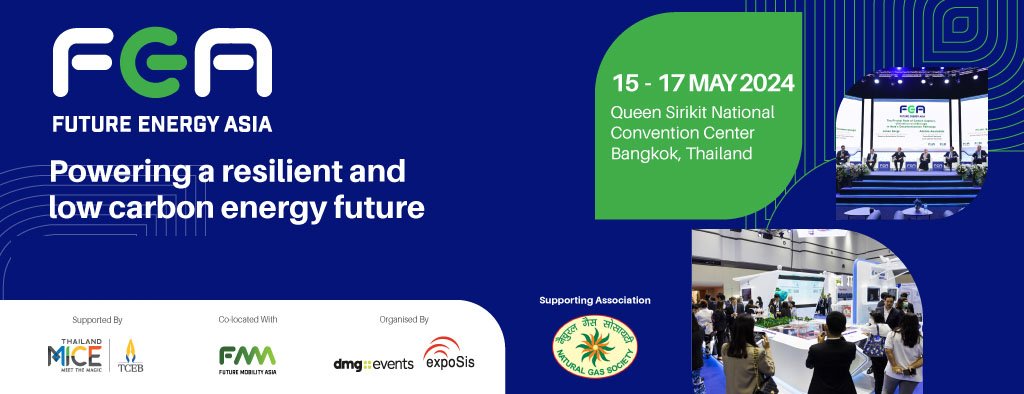



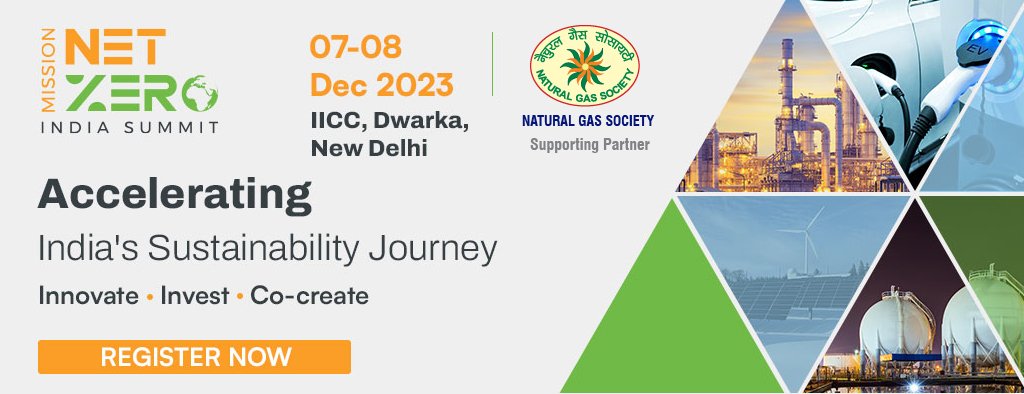
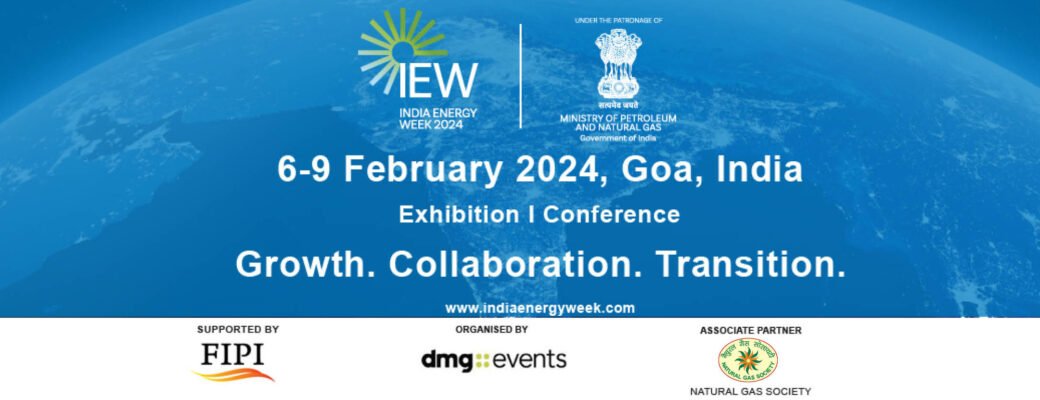

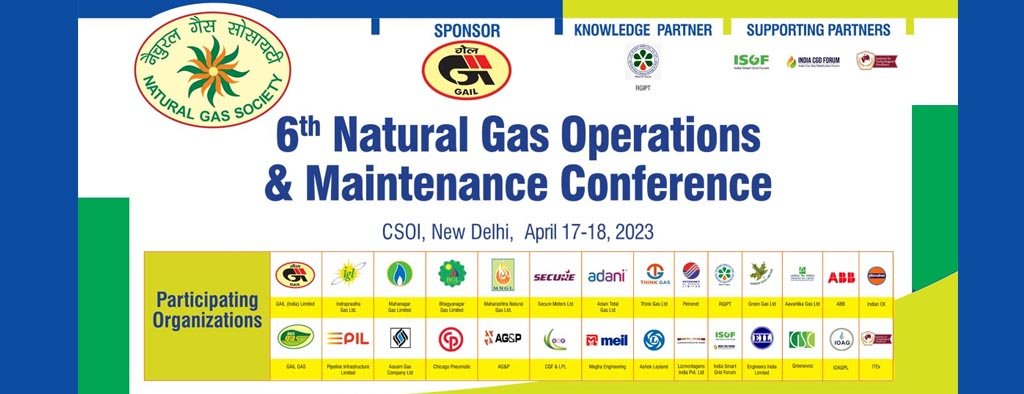

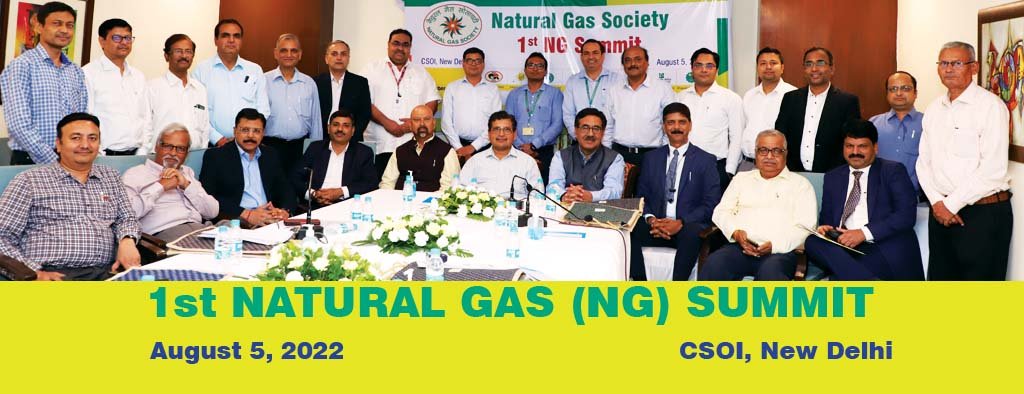
 Over 2,000 households in Ranchi are all set to get piped gas in their kitchens, replacing LPG cylinders, under the Urja Ganga Gas Pipeline Project (UGGPP), officials said. GAIL, which has been carrying out infrastructure development and pipeline work, has said the project is in its final stage. GAIL executive director (eastern region), KB Sinha said, “
Over 2,000 households in Ranchi are all set to get piped gas in their kitchens, replacing LPG cylinders, under the Urja Ganga Gas Pipeline Project (UGGPP), officials said. GAIL, which has been carrying out infrastructure development and pipeline work, has said the project is in its final stage. GAIL executive director (eastern region), KB Sinha said, “ Including condensate and natural gas liquids, the overall liquids production stood at 1.729 million barrels of oil equivalents per day, lagging the NPD prediction by 1.3%. Norway’s oil production fell 8.8% year-on-year in April to 1.38 million barrels per day, lagging the official forecast for the month by 0.6%,
Including condensate and natural gas liquids, the overall liquids production stood at 1.729 million barrels of oil equivalents per day, lagging the NPD prediction by 1.3%. Norway’s oil production fell 8.8% year-on-year in April to 1.38 million barrels per day, lagging the official forecast for the month by 0.6%,